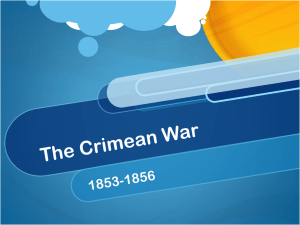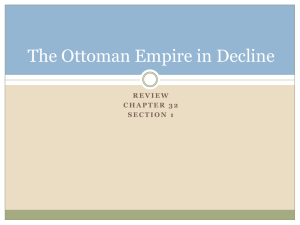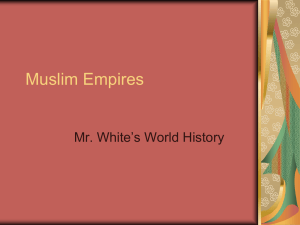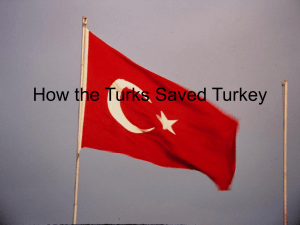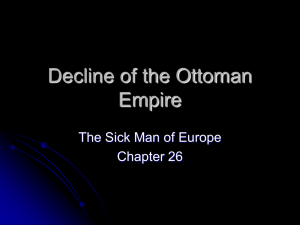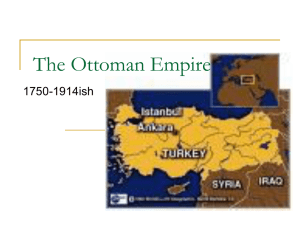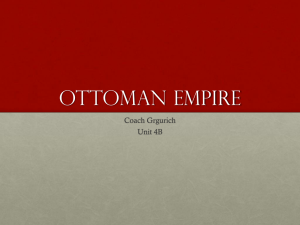Brief history of Turkey
advertisement
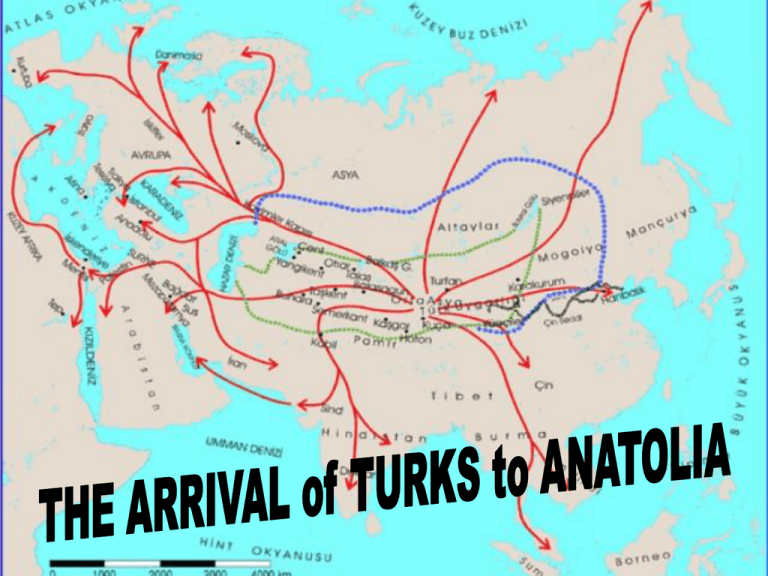
The Battle of Malazgirt, was fought between the Byzantine Empire and Seljuq Turks led by Alp Arslan on August 26, 1071. The decisive defeat of the Byzantine army allowed Turks to gradually populate Anatolia. Ottoman Empire was an empire that lasted from 27 July 1299 to 29 October 1923. • At the height of its power, in the 16th and 17th centuries, it controlled territory in southeastern Europe, southwestern Asia, and North Africa The Ottoman Empire contained 29 provinces and numerous vassal states, some of which were later absorbed into the empire, while others were granted various types of autonomy during the course of centuries. The Ottoman conquest of Constantinople(Istanbul) in 1453 Fatih Sultan Mehmed cemented the status of the Empire as the preeminent power in southeastern Europe and the eastern Mediterranean HE IS THE CONQUERER of ISTANBUL Hagia Sophia is a former Orthodox patriarchal basilica, later a mosque, and now a museum in Istanbul, Turkey. A VIEW of HAGIA SOPHIA A VIEW of HAGIA SOPHIA • Suleiman I. was the tenth and longest-reigning Sultan of the Ottoman Empire, from 1520 to his death in 1566. He is known in the West as Suleiman the Magnificent and in the East, as "The Lawgiver", for his complete reconstruction of the Ottoman legal system. • Suleiman became a prominent monarch of 16th century Europe, presiding over the apex of the Ottoman Empire's military, political and economic power. Suleiman personally led Ottoman armies to conquer the Christian strongholds of Belgrade, Rhodes, and most of Hungary before his conquests were checked at the Siege of Vienna in 1529 • The Siege of Vienna in 1529 was the first attempt by the Ottoman Empire, led by Suleiman the Magnificent, to capture the city of Vienna, Austria. The siege signalled the pinnacle of the Ottoman Empire's power, the maximum extent of Ottoman expansion in central Europe, and was the result of a long-lasting rivalry with Europe. Thereafter, 150 years of bitter military tension and reciprocal attacks ensued, culminating in the Battle of Vienna in 1683, which marked the start of the Great Turkish War by European powers to remove the Ottoman presence. The Balkan Wars were two conflicts that took place in the Balkans in south-eastern Europe in 1912 and 1913. İNGİLTERE ALMANYA FRANSA AVUSTURYAMACARİSTAN RUSYA İTALYA ABD ROMANYA JAPONYA YUNANİSTAN İTALYA BULGARİSTAN OSMANLI • The Battle of Gallipoli,took place at the peninsula of Gallipoli in the Ottoman Empire (in modern day Turkey) between 25 April 1915 and 9 January 1916, during the First World War. A joint British and French operation was mounted to capture the Ottoman capital of Constantinople and secure a sea route to Russia. The attempt failed, with heavy casualties on both sides The struggle laid the grounds for the Turkish War of Independence and the foundation of the Republic of Turkey eight years later under Mustafa Kemal (Atatürk), himself a commander at Gallipoli. THE REGIONS TAKEN by DIFFERENT COUNTRIES ACCORDING to ‘ THE TREATY of MONDROS’ • The Treaty of Sèvres (10 August 1920) was the peace treaty between the Ottoman Empire and Allies at the end of World War I. However ,the powers could not come to an agreement which, in turn, hinged on the outcome of the Turkish national movement. The Treaty of Sèvres was annulled in the course of the Turkish War of Independence and the parties signed and ratified the superseding Treaty of Lausanne in 1923. • The Turkish War of Independence was a war of independence waged by Turkish nationalists against the Allies, after the country was partitioned by the Allies following the Ottoman Empire 's defeat in World War I • A cadre of young military officers, led by Mustafa Kemal Atatürk and his colleagues, organized a successful resistance to the Allies; in 1923, they would establish the modern Republic of Turkey with Atatürk as its first president Turkey is a democratic, secular, unitary, constitutional republic with an ancient cultural heritage. Turkey began full membership negotiations with the European

